Devices with high speed or high resolution require a clean power supply. Switching regulators provide high efficiency over a wide range of input/output conditions, but typical switching power supplies are difficult to achieve with clean, low output noise required for high data rate FPGA I/O channels or high bit count data converters. And fast transient response characteristics. In contrast, high-performance linear regulators have low output noise and fast transient response, but they heat up quickly.
The LTM8028 combines the best of both worlds with a high-efficiency synchronous switching converter controlled by UltraFastTM linear regulators, all packaged in a small 15mm x 15mm μModule® package. The package is available in both LGA (4.32mm high) and BGA (4.92mm high) lead types and is RoHS compliant.
The linear regulator is responsible for controlling the output of the switching power supply to a value 300mV above the desired output voltage to provide an optimal combination of margin, efficiency, and transient response performance. The LTM8028 accepts inputs up to 40V and produces an output voltage between 0.8V and 1.8V at currents up to 5A. Figure 1 shows a typical 1.2V output application.
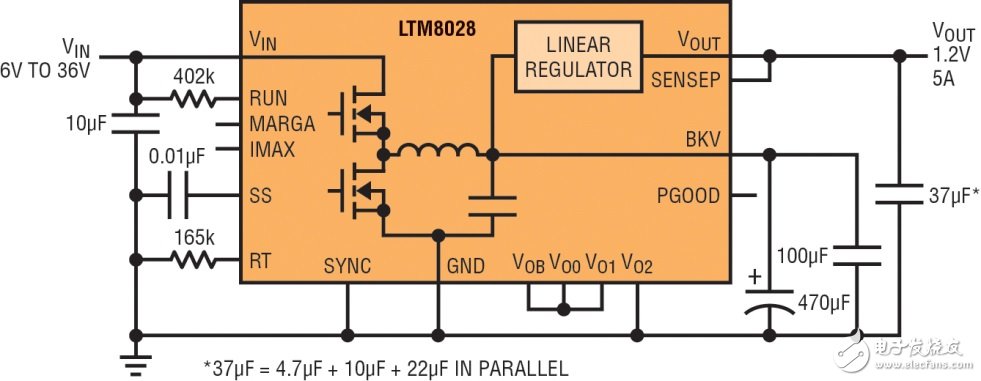
Figure 1: The LTM8028 is used in a 36V input, UltraFast, low output noise 5A μModule regulator.
The output voltage of the LTM8028 is set by controlling the three tri-state inputs (VO0, VO1, and VO2). Applying a voltage to the MARGA pin allows the user to implement up to ±10% margin adjustment on the output. The IMAX pin can be used to reduce the maximum current limit of 5A, while a PGOOD signal is used to indicate that the output is within 10% of the target voltage.
A design that uses a traditional linear regulator to generate a 1.2V/5A output from a 12V supply will consume more than 50W and may require the use of an expensive heat sink. As shown in Figure 2, the LTM8028 consumes less than 1/12th (less than 4W), resulting in a typical junction temperature rise of only 45°C.

Figure 2: In a 12V input to 1.2V/5A output application, the LTM8028 has a power dissipation of less than 4W and a temperature rise of only 45°C.
At the heart of the LTM8028 is a high performance linear regulator. Its overall voltage and load regulation is less than 0.2% (at room temperature) and 1% (over the entire –40°C to 125°C temperature range). The linear regulator's UltraFast bandwidth provides a transient response of only 2% for the LTM8028 in a 10% to 90% load step. Figure 3 and Figure 4 show the transient response of the LTM8028 with a load of 1A/μs from 0.5A to 5A, respectively, when the device is configured to provide 1V and 1.8V output.

Figure 3: The transient response of the LTM8028 is less than 20mV at 1.0V output.
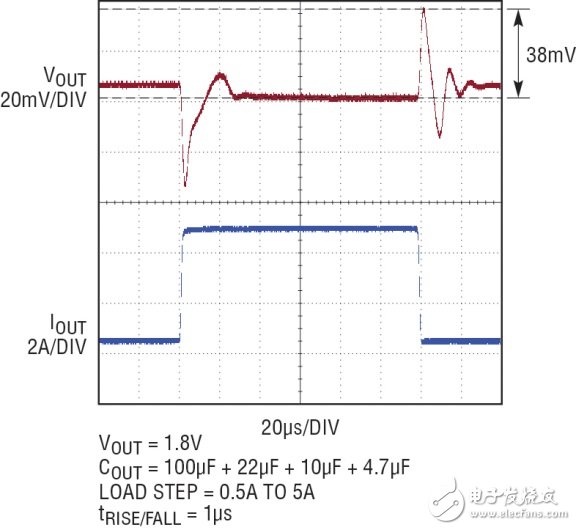
Figure 4: The LTM8028 has a transient response of only 38mV.
Although linear regulators and synchronous switching converters are packaged together, high power supply rejection and integrated noise reduction circuitry produce low output noise. As shown in Figure 5, the peak-to-peak noise is less than 1 mV. *
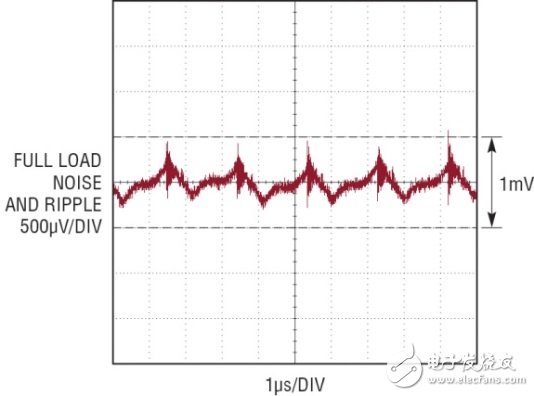
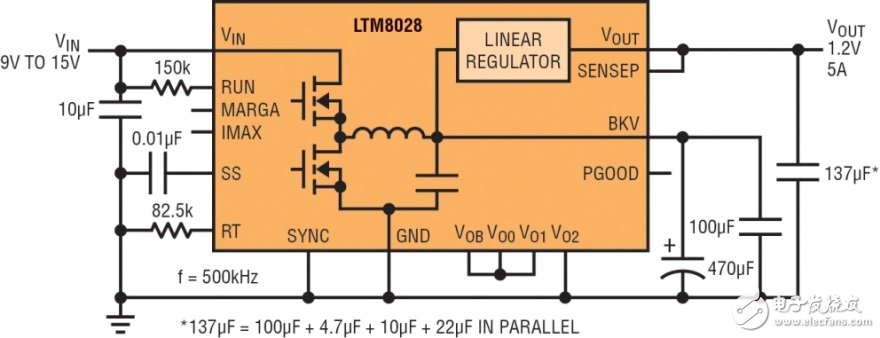
Figure 5: The peak-to-peak switching noise at the LTM8028 output is less than 1mV. (The schematic shows the settings used to implement these results.)
In the frequency domain, the spectral noise component is very low, with a peak value of 4μV/√Hz at the fundamental frequency of the switching converter at 300kHz, as shown in Figure 6. This is important when powering high bit count data conversion circuits.
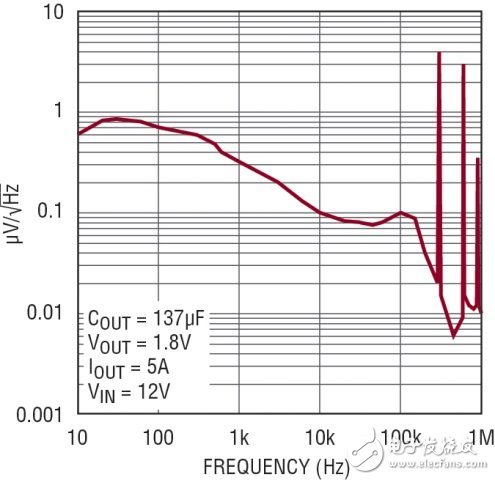
Figure 6: Output noise spectral density with a peak of only 4μV/√Hz makes the LTM8028 an excellent choice for high-sensitivity data conversion circuits.
Conclusion The LTM8028 μModule regulator can be used when system design requires low power loss, tight regulation, fast transient response, and low output noise. The device combines the best features of a high performance switching regulator and linear regulator in a single space-efficient package.
Air Hoist,Pneumatic Hoist,Air Powered Hoist,Pneumatic Air Hoist
RUDONG HONGXIN MACHINERY CO.,LTD , https://www.rdhxmfr.com
